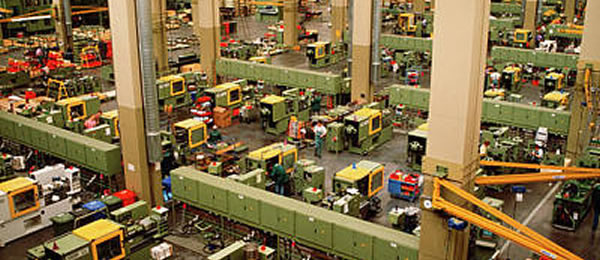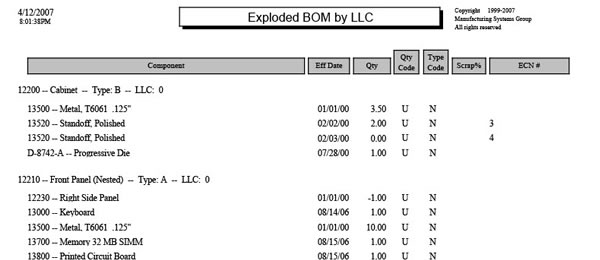Inventory Control (Reduction & Accuracy)
Inventory Control is one of the hardest things to get your hands around with the pressures of "getting the product out", finding someplace to put the in-coming stock, keeping some sort of identification system inside the cage and procedures for keeping inventory accurate.
Somebody once told me there are at least 10 reasons why a person hits a bad shot in golf, however, if you learn to keep your head down you can forget about the other 9! We have been working with manufacturing companies for a long time and have established a few items needed to get your hands around the Inventory Control requirements of a company.
Some examples are:
- Inventory accuracy
- Reduce lead times of items you make
- Speed up the time to replenish raw material
- Review order quantities
- Clean out old inventory
- Hold your suppliers accountable
- Tighten up on replenishing from forecast
One of the 1st thing we do during an MRP audit or review of Inventory Control is ask the folks "How accurate is the inventory?" The answers are quite revealing depending on who your talk to. We then go to the cage and count 10 parts and immediately go to the computer and see what the system indicates. I always make sure the sampling is representative of normally used parts.
It doesn't matter why the counts are wrong. If the computer inventory doesn't match the actual count the part count is wrong, period! The inventory must be accurate and kept accurate for the MRP system to reliability plan for replenishment of material. Performing cycle counts to keep inventory accurate is a path leading to unreliable information and unrealistic procedures.
Cycle counting inventory should be a vehicle to find problems with the current Inventory Control procedures. Errors should be tracked down to find out why the error exist, not just adjust the counts. You should not get more fireman, you need to catch the person with the matches!
Reduce lead times of items you make
Review the overall lead time of raw material, sub assemblies and top level finished goods to find out what makes up the product overall lead time. Some times stocking sub assemblies can be effective depending on the labor content. This is one area where "islands of automation" can hinder the overall plan to reduce total lead time to the customer. Company decisions need to be made concerning master scheduling finished good products. In some cases you can master schedule the sub-assemblies where large variations of end products exist.
Speed up the time to replenish raw material
The amount of inventory you have has little to do with your level of customer service. It has more to do with how fast you can replace it. If it takes six weeks to replace an item, you must reorder with at least six weeks (plus safety stock and "Just in Case" inventory) supply or you risk a stock out. If you can replace the same item in one day, a two day supply will give you more than enough to fill any order and a stock out is only for one day, not until the next batch is produced.
Review order quantities
Many companies buy raw material in thousands, produce product in hundreds and sell in units. These misalignments create large quantities of inventory that run the risk of slow movement, obsolescence and damage, not to mention tying up valuable cash. Most companies justify this behavior based on "economies of scale". If the material is arriving from off-shore suppliers the economy of stocking such a large quantity of material to get the "volume discount" should be reviewed. Vendor Managed Inventory has proven to be quite beneficial to have material arrive when needed.
Clean out old inventory
There are a number of reports available to identify obsolete or slow moving inventory. Analysis should be performed on the cost of keeping old inventory vs. the benefit of producing a product that has questionable overhead expense attached.
Hold your suppliers accountable
Suppliers must be held accountable for on-time delivery of a quality product. If the supplier misses delivery dates 20 percent of the time or delivers bad quality material then the company is likely to miss customer shipments due to stock out situations. We have a number of supplier performance reports available to calculate the on-time, early and late percentages of material received. These reports have been used as ISO documentation to track supplier performance and rate the supplier against standards.
Tighten up on replenishing from forecast
Forecasts are great and necessary but they are no more than educated guesses. And the farther out into the future the forecast the higher the probability that the guess will be very wrong. To use market demand to replenish finished goods keeps the inventory level aligned with what customers are actually buying. In these days of ERP systems, information technology and other high tech systems, it almost seems too simple. I can assure you that these things are easier to talk about than to execute, but the payoff is worth it.
For more information on Inventory Control assistance please contact us at:
Phone: 727 642-4677
E-mail: rmapes@mfgsysgroup.com


















